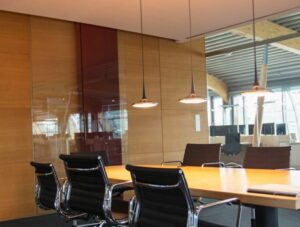Summary

We are still seeing on the small scale these National Stats locally as discussed in our September update.
In the final quarter, there is usually the opportunity to end a year and start the next year strong. Although the third quarter of the year has already ended, there is still much uncertainty in the market since the Federal Reserve continues its tightening monetary policy. The labor market remains firm, and the U.S. economy grows faster than the expectations. However, risks are still anticipated in the market as the full impact of the Federal Reserve’s higher rates may not have been fully reflected yet in households and businesses.
As a result, the commercial real estate market continues to experience rising vacancy rates and slowing rent growth. Shrinking leasing velocity in tandem with the construction boom in the multifamily sector has tapered off the market. However, the fundamentals remain solid for the industrial, retail, and multifamily sectors, although activity has dropped from the pandemic highs. The office sector continues to suffer from the slow return-to-office movement even though there are multiple efforts to repurpose the increasing number of unused office spaces.
Here is how each commercial real estate sector performed in the third quarter of 2023.
Multifamily Properties
With mortgage rates above 7.5%, the Multifamily segment is witnessing a resurgence of demand for apartments after slowing down for nearly a year. The net absorption over the last 12 months has risen significantly by 33% compared to the preceding year. This has encouraged construction firms to increase unit deliveries by 17% compared to the same timeframe a year earlier. Challenges like overbuilding and the resistance of the sector to immediate change have pushed vacancy rates to an unprecedented 7%, subsequently reducing rent growth to 0.8%. Nonetheless, the multifamily sector is anticipated to remain above the pre-pandemic levels, driven by favorable demographics and a robust job market fostering household establishment.
Office Property
Despite some employers mandating in-person work and the decline of remote jobs, the Office sector is still facing challenges. The downward trend of office space demand has continued throughout the year, resulting in a record-high vacancy rate of 13.3% compared to the previous year’s 12.2%. The future of the traditional office space is unclear due to the ongoing impact of COVID-19, with many businesses adopting hybrid work arrangements that allow for a mix of in-person and remote work. However, office spaces have gained popularity among AI-driven companies looking to accommodate their staff amid the sudden surge in AI demand.
Retail Properties
The Retail sector of commercial real estate has further decreased its vacancy rate to a 10-year low of 4.1% in September, and it remains the lowest among all sectors. Furthermore, although the rent growth rate has eased, it remains above the pre-pandemic levels. Despite higher prices, consumer spending remains strong. As a result, this sector continues to perform better than before COVID-19. Locally, retail vacancy is still one of the strongest sub-markets in our area with continued low vacancy.
Hotel/Motel Properties
For the past seven months, the hospitality sector’s revenues have stabilized near $97, reflecting a 13% increase from the pre-pandemic levels. Although the average daily rate has remained consistent over the last four months and stands 17% above pre-pandemic figures, the occupancy rate lags, still trailing nearly 3% behind its pre-coronavirus state. These trends suggest that while the hospitality sector has yet to recover from the COVID-19 impact fully, it is certainly on a promising trajectory towards recovery.


